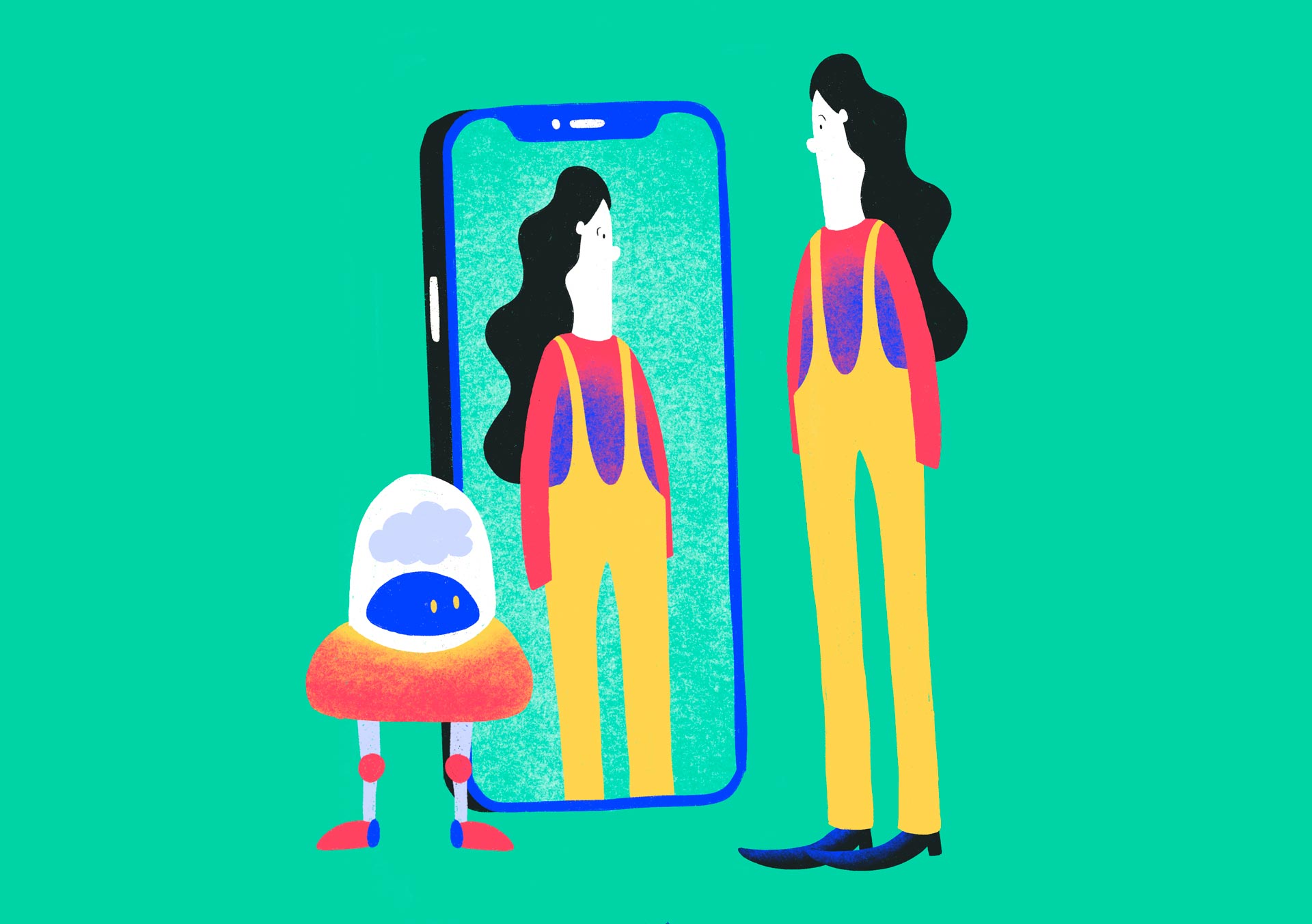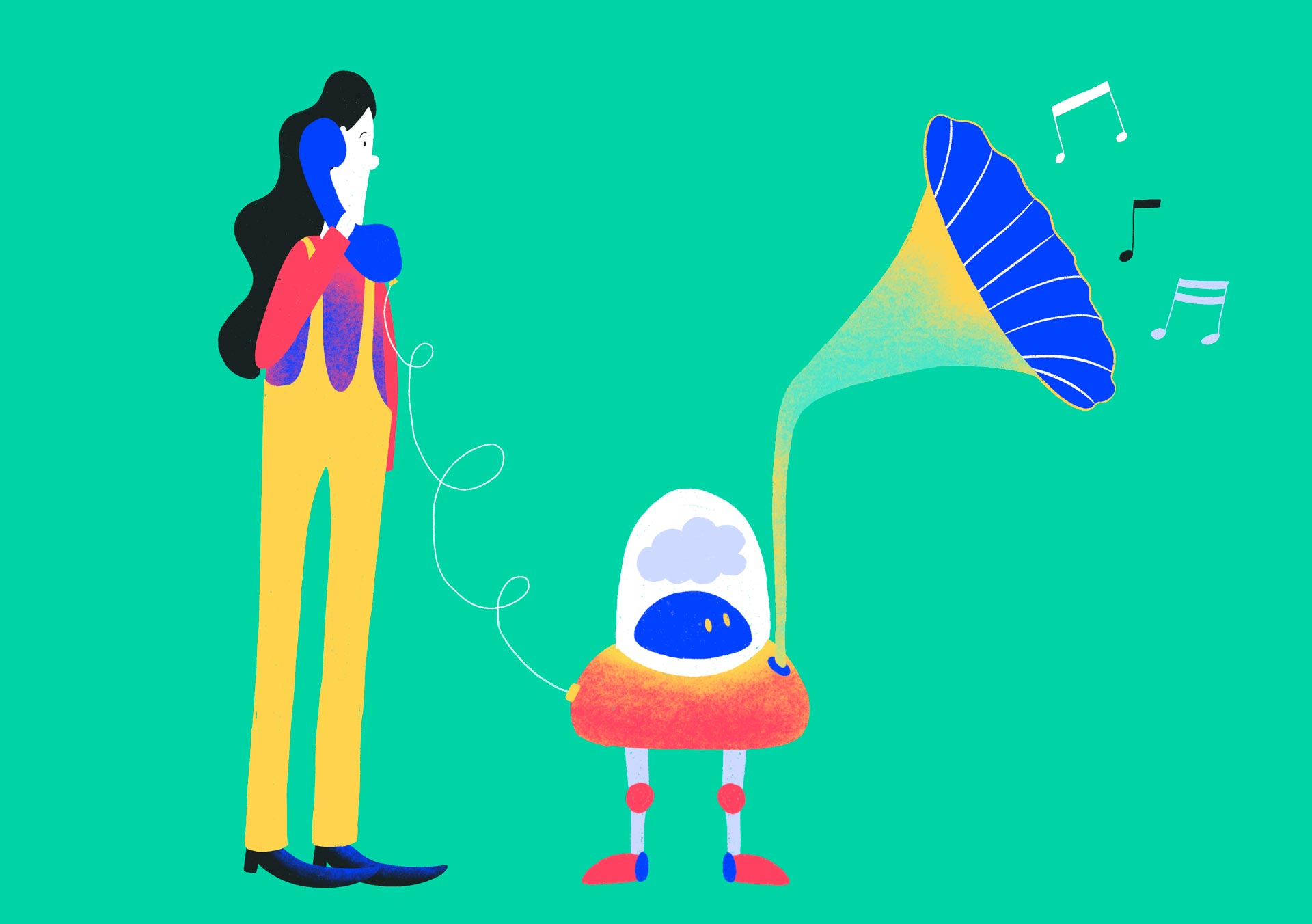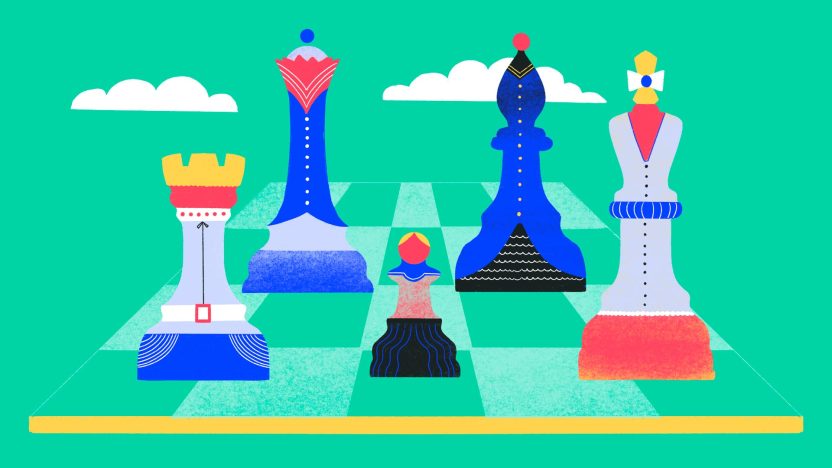Ctrl+Alt+You: Is AI rewriting your professional identity?
From AI buddies to digital doppelgangers, from corporate manipulation to revolutionary self-expression tools, we explore the myriad ways AI is reshaping what it means to be “you” in the professional sphere
by MAIZE

At a time when the lines between the digital and physical worlds are increasingly blurred, Artificial Intelligence isn’t just reshaping how we work — it’s fundamentally altering how we present ourselves professionally. Picture a world where your digital clone runs meetings while you focus on high-level strategy or where your voice is seamlessly transformed to sound like a native speaker in any language. Now imagine the flip side: a reality where deepfake scammers use your face to apply for jobs or where your company subtly manipulates your identity to fit its ideal employee mold.
This isn’t science fiction — it’s the complex reality of AI’s impact on professional identity today. From AI assistants that amplify our capabilities to sophisticated impersonation technologies that threaten our very sense of self, the AI revolution is ushering in an era of unprecedented opportunity and risk. As we stand at this technological crossroads, one question looms over all: will AI empower us to express our most authentic selves in the workplace, or will it erode the very essence of our professional identities?
Highlight ✦ As AI reshapes the workplace, it presents both opportunities for increased productivity and risks to personal and professional authenticity.
Can AI be a professional ally?
Take the case of Chris Do, an Emmy Award-winning designer and founder of The Futur. In an interview published on the Dropbox blog in April 2024, he explained how he recognized the limitations of being just one person in his quest to help a billion people navigate the creative industry and began working with SHO.ai to create DoBot, an AI-driven digital clone of himself. This virtual Chris Do can now provide one-on-one coaching to students on branding, design, and business strategy, effectively multiplying Do’s reach and impact. “If I ever want to have a shot at reaching one in eight people on planet Earth with the educational content we create, I can’t be sitting around making small decisions, taking small actions,” Do explains.
Highlight ✦ AI assistants and tools are enabling professionals to scale their impact and focus on high-value work, but they are also raising questions about the future role of human creativity and expertise.
Similarly, tech-marketing agency Codeword made headlines in January 2023 when it introduced AI interns named Aiko and Aiden. These digital entities, capable of graphic design, research, and editorial content generation, were being used to support the company’s editorial and design teams. Axios reported that Codeword senior editor Terrence Doyle said, “It’s a way to streamline internal processes by eliminating necessary but mind-numbing and time-consuming tasks.” In the creative industries, the experiment isn’t the only one of its kind. In 2023, world-renowned advertising agency DDB developed The Uncreative Agency. This AI-powered tool generates a creative proposal based on a simple one-sentence brief, as part of RAND, its newly created dedicated hybrid creative platform. Created by George Strakhov, Chief Strategy Officer at DDB EMEA, and his team at NORD DDB, the tool invites users to submit a simple one-sentence brief that generates a unique creative proposal in a matter of minutes — with no human input and zero budget.

AI as a professional impersonator
While AI offers tremendous potential as a productivity enhancer, it also presents significant risks, particularly in the realm of identity theft and fraud. The rise of deepfake technology has opened up new avenues for scammers to impersonate professionals and take advantage of unsuspecting victims. And this is not something new or unknown to most. Back in 2022, news broke that Meta had to remove a deepfake video that falsely showed Ukrainian President Volodymyr Zelensky calling for his troops to surrender during the Russian invasion, highlighting the potential for AI to be used in disinformation campaigns.
The fact that insider threats to organizations can now include deepfakes raises the issue to a whole new level in the business world, especially since they can be difficult to detect. Each year, insider attacks affect more than 34% of companies worldwide. According to a Carnegie Mellon University study, the accuracy of artificial intelligence designed to identify altered video can range from 30% to 97%. Sensity, an Amsterdam-based threat intelligence company, found that anti-deepfake technologies accepted deepfake videos as real 86% of the time. Clearly, there’s a lot of work to be done in the area of detection.
Highlight ✦ The advent of AI-powered deepfakes and sophisticated scams poses a significant threat to professional identities and corporate security.
Meanwhile, the FBI has reported cases of deepfakes being used to apply for remote jobs, particularly in IT and programming roles that often involve access to sensitive information. This trend is part of a broader rise in AI-enabled job scams. According to a report from the Identity Theft Resource Center, consumer reports of job scams jumped 118% in 2023 compared to the year before. Scammers are leveraging AI to create increasingly convincing fake job ads and communications, making it harder for victims to distinguish legitimate opportunities from fraudulent ones. “The rapid improvement in the look, feel, and messaging of identity scams is almost certainly the result of the adoption of AI-driven tools,” the ITRC stated in its trend report.

What if corporate AI is manipulating your professional persona?
Sanas, a Silicon Valley startup founded in 2020, is on a mission: to develop an innovative real-time voice-altering technology that aims to modify the accents of call center workers around the world to sound “clearer.” This technology addresses a persistent challenge that millions of call center workers face, particularly in countries like the Philippines and India, where an entire industry has sprung up around “accent neutralization” training.
The existing accent modification industry often struggles to effectively achieve its goals. Sanas offers its technology as a more efficient solution. Using data on various accent characteristics and their correlations, Sanas’ AI engine can transform a speaker’s accent into a close approximation of another — currently focusing on converting non-American accents into what is perceived as a white American accent.
Sanas touts its technology as “a step toward empowering individuals, advancing equality, and deepening empathy.” The company has successfully secured $32 million in venture capital funding. Co-founder Bob Lonergan enthusiastically describes the software as having “the potential to disrupt and revolutionize communication.”
Highlight ✦ AI technologies that alter fundamental aspects of an employee’s identity, such as accent or appearance, raise ethical concerns about authenticity and cultural respect in the workplace.
However, this technological advance raises significant ethical and sociological questions. It prompts a critical examination of whether AI technology is genuinely helping marginalized individuals overcome bias or inadvertently reinforcing the prejudices that create challenges in their lives.
A. Aneesh, a sociologist and the incoming director of the University of Oregon’s School of Global Studies and Languages, expressed concern about this approach in an in-depth article published in The Guardian. He suggests that artificially neutralizing accents represents a form of “indifference to difference,” potentially diminishing the humanity of the individual on the other end of the communication. Aneesh argues, “It allows us to avoid social reality, which is that you are two human beings on the same planet, that you have obligations to each other. It’s pointing to a lonelier future.”

Imagine AI as a tool for authentic self-expression
Despite the challenges, there’s a growing movement to harness the potential of AI to make digital identities more inclusive and authentic, particularly in the realm of avatars and virtual representations. The global digital avatar market is projected to reach €495.7 billion by 2032, driven by consumer demand for customizable avatars that reflect diverse identities and values. In 2020, gamers spent €50.1 billion on in-game content such as skins, a figure expected to exceed €69 billion by 2025.
This market data is driving some innovators and startups to take an intersectional approach to avatar development, aiming to better represent different aspects of identity, including gender, race, and ethnicity. For example, in March 2023, Spanish startup Union Avatars introduced Amara, a female avatar with body measurements that challenge industry standards and seek to portray a non-sexualized representation of a woman in the digital environment. Similarly, in 2023, the open-source Afro Hair Library, thanks to a partnership with Unilever’s Dove, launched Code My Crown, a free guide to coding natural hair in games, addressing the lack of representation of textured hair in video games.
Highlight ✦ The innovative use of AI in avatar creation and customization is opening new avenues for authentic self-expression and representation in digital spaces.
Major tech companies are also joining this movement. Meta’s September 2023 software update for Quest headsets allows users to customize avatars with greater precision, including skin tone and makeup options. Apple’s Vision Pro introduces Personas, AI-generated digital clones designed to be “authentic spatial representations” of users in virtual meetings.
Looking ahead, the future of digital identity and AI-powered avatars promises to be nothing short of revolutionary. In a post for BBVA’s OpenMind blog, author and futurist Patrick Henz paints a picture of a world in which our digital representations evolve far beyond mere static images or customizable characters. Henz foresees the emergence of AI-powered avatars that could evolve into semi-autonomous virtual entities, capable of performing tasks such as booking appointments and representing users in online meetings. This development represents a significant leap forward in the integration of artificial intelligence with personal digital representation.
The concept of “Virtual Beings,” as Henz calls them, involves the fusion of avatars with artificial intelligence to create digital entities that can operate with a degree of autonomy. Central to this concept is the development of a Personal Digital Twin stored in cloud infrastructure. This digital twin would encompass a comprehensive profile of an individual, including physical appearance, preferences, knowledge base, and even predictive behavioral patterns. The fidelity and depth of this digital representation would directly correlate with the ability of the Virtual Being to authentically emulate its human counterpart.
Highlight ✦ Of relevance to companies, after an employee leaves the organization, going to work for another company or retire, would their Virtual Being be allowed to remain on a potential company platform?
Henz posits that as these Virtual Beings become more sophisticated, the distinction between user-controlled avatars and autonomous Virtual Beings may become increasingly subtle. This development raises intriguing questions about the nature of digital identity and representation. In this scenario, Generation Alpha — individuals born between 2010 and 2024 — may be the first generation to grow up in an environment where avatars and virtual beings are ubiquitous. This could lead to a fundamentally different understanding and expectation of digital representation among this cohort.
As the demand for more inclusive and customizable digital representations continues to grow, artificial intelligence is expected to play a pivotal role in both streamlining the creation process and expanding the possibilities for self-expression in virtual environments, both in the personal and professional spheres. The implications of these developments are far-reaching, encompassing areas such as personal productivity, digital identity, and the philosophical questions surrounding consciousness and representation. As we approach this new frontier of digital technology, it is clear that our notion of digital selfhood is poised for significant change, presenting both opportunities and challenges that will require careful consideration and analysis.
This article is part of our research project


